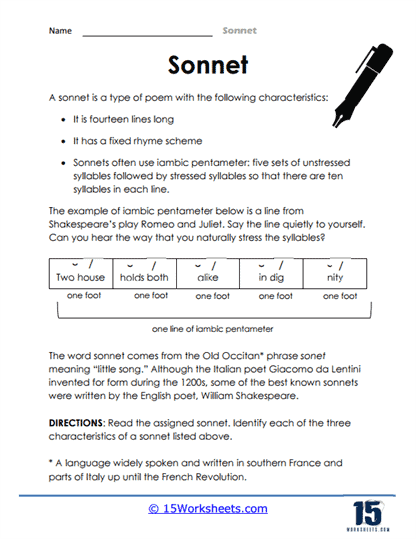What Is A Sonnet?

Worksheet Description
The worksheet provides an introduction to the sonnet, a poetic form characterized by its length of fourteen lines, a fixed rhyme scheme, and a typical meter known as iambic pentameter. It includes an example of iambic pentameter from Shakespeare’s “Romeo and Juliet” for students to practice scansion by marking the stressed and unstressed syllables. Additionally, the worksheet offers a brief history of the sonnet, attributing its origin to the Old Occitan phrase “sonet” meaning “little song,” and noting its development during the 1200s, with significant contributions from the Italian poet Giacomo da Lentini and the English poet William Shakespeare.
The worksheet is designed to teach students the fundamental aspects of a sonnet, including its structural requirements and rhythmic pattern. Through scansion practice, students learn how to identify and analyze the meter of a poem, a skill that deepens their understanding of poetic form and enhances their ability to appreciate the nuances of poetry. The historical context provided in the worksheet also helps students connect the form with its cultural origins and evolution, giving them a broader perspective on the sonnet’s place in literary history. This worksheet not only imparts knowledge about the sonnet form but also encourages active engagement with the text.
